
Thinking About Pickleball? Here’s How to Get Involved Without Getting Sidelined…
In the US, pickleball is all that! It is by far the fastest growing sport and has been since 2020. In 2023, there were an estimated 36.5 million pickleball players in this country. The Sports & Fitness Industry Association estimates that 14% of Americans played pickleball during the past 12 months.
Pickleball is a very accessible sport – a mélange of tennis, badminton, and ping pong. True pickleball geeks know that the sport was invented in 1965 by three friends on vacation who played a game with ping pong paddles and a wiffle ball on a badminton court using tennis rules. 60 years later, the game has evolved and has become big business.
A huge part of pickleball’s appeal is that it is beginner-friendly and lower impact, making it appealing to a broader range of players, from young kids to older adults. The court size is smaller, requiring less running than tennis, and the basic skills can be picked up in one or two sessions, making it accessible to new players of all ages.
But we have COVID-19 to thank for really fueling the pickleball craze. Pickleball saw explosive growth during the pandemic because it was an activity most people could enjoy, and its outdoor, socially-distanced gameplay made it ideal for staying active without the risks associated with indoor sports. Pickleball courts sprouted up in parks and neighborhoods, allowing people to connect and exercise safely. Once engaged, people were hooked.
Although it may seem that the game has drawn most new players from the 50+ population, that isn’t the case. Almost 30% of all pickleball players are 18-34. In 2021, the Pro Pickleball Association (PPA) even launched a professional circuit, which has gotten athletes interested and cemented pickleball as more than just a backyard game.
Talking to pickleball converts can feel like talking to members of a cult. They’re thrilled by their new lifestyle and would love to have us join them. But the pickleball boom can be a pickleball bust for the increasing number of players who are experiencing pickleball injuries – some serious.
Recent reports show that pickleball injuries are outpacing the sport’s growing popularity. Believe it or not, the very things that make the game so popular are causing the most injuries.
- Accessibility. Because the game is so easy to pick up and accessible to almost everyone, players tend to dive in after engaging in little to no physical activity. Medical providers call it the couch-to-court phenomenon and say it isn’t a great idea. Going couch to court can be hard on the cardiovascular system, and getting used to a new set of movements can mean falls, strains, and sprains.
- Enjoyment. Pickleball is a fun, communal game. Once people get started playing in a group, pickleball often becomes a regular social activity. This increases the chance of developing repetitive motion injuries, especially among those of us who were previously less active. These include rotator cuff injuries, tennis (or pickleball) elbow, and worsening of arthritis.
- Explosive movements. Pickleball requires short bursts of intense movement, with players switching directions quickly to follow the ball. This results in common soft tissue injuries like sprained ankles or debilitating knee injuries, such as damage to the ACL (anterior cruciate ligament), Achilles tendon tears/strains, and foot fractures.
How to Play and Not Pay
You don’t have to sit on the sidelines to avoid injuries. A few simple tips will significantly reduce your risk.
- Take a lesson or learn the basics before playing a game. If your brain understands the right mechanics, you are less likely to move your body in a dangerous way during your early play.
- Wear the right footwear. It’s not a good idea to wear running shoes or your walking around shoes to play pickleball. Pickleball requires court shoes – tennis, basketball, or pickleball shoes work. The difference is in the amount of support court shoes give your feet for lateral movement and in the greater traction they offer. Slipping and twisting an ankle cause many pickleball injuries. Court shoes definitely can help.
- Limber up! If you are going to join the latest craze, make sure your body is ready for all that excitement. A little extra flexibility will go a long way to make sure you don’t get out of joint (pun intended).
Amaze fitness expert, Cire Ba, has put together an efficient warm-up/flexibility routine to get you ready for your pickleball adventure! Try these before hitting the pickleball court.
Child’s Pose
Target: Lower back and spine (Stretch the lower back muscles.)
Step 1: Kneel with your toes touching and knees apart.
Step 2: Sit back onto your heels while reaching forward.
Step 3: Hold for 20–30 seconds.
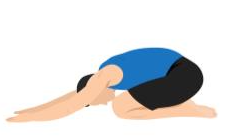
Seated Torso Twist
Target: Lower back and obliques (Stretch the sides of your back and spine.)
Step 1: Sit with your legs extended or bent, crossing one leg over the other.
Step 2: Twist your torso, pressing the opposite elbow against your knee.
Step 3: Hold for 20–30 seconds, then switch sides.
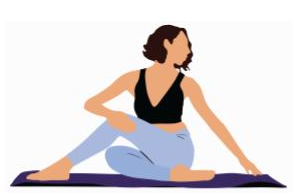
Overhead Shoulder Stretch
Target: Shoulder and triceps muscles. (Stretch upper arms and shoulders.)
Step 1: Extend one arm overhead, bending your elbow.
Step 2: Gently pull your elbow down with the opposite hand.
Step 3: Hold for 20–30 seconds, then switch arms.
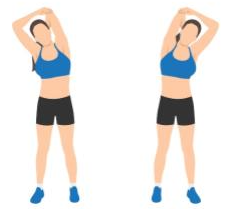
Hip Flexor and Quad Stretch
Target: Hip flexors and quadriceps. (Stretch the front of your hips and thighs.)
Step 1: Kneel, stepping one foot forward.
Step 2: Push your hips forward to feel the stretch in the opposite hip.
Step 3: Hold for 20–30 seconds, then switch sides.
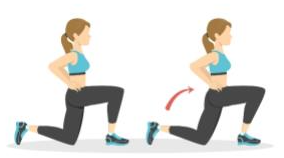
Figure Four Stretch
Target: Hips and glutes (Stretch your outer hips and buttocks.)
Step 1: Lie on your back, cross one ankle over the opposite knee.
Step 2: Pull your thigh toward your chest.
Step 3: Hold for 20–30 seconds, then switch sides.
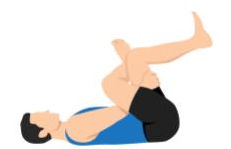
Walking Lunges
Target: Quadriceps, hamstrings, and glutes (Engage the front and back of your thighs and glutes.)
Step 1: Stand with your feet together.
Step 2: Step forward, bending your knees until the back knee almost touches the floor.
Step 3: Push off to step forward with your opposite leg. Repeat 10–12 reps per side.
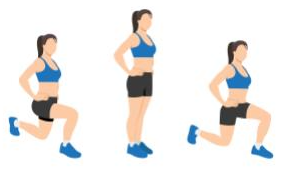
Calf Stretch
Target: Calf muscles (Stretch the lower back portion of your legs.)
Step 1: Stand facing a wall and place your hands on the wall.
Step 2: Step one foot back with your heel on ground.
Step 3: Lean forward, hold for 20–30 seconds, then switch sides. Step 4: Repeat with the opposite ankle.
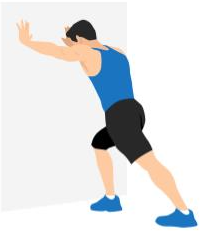
Ankle Circles
Target: Ankle joints and surrounding muscles (Improve mobility and stability in your ankles.)
Step 1: Sit or stand with one foot lifted slightly off the ground.
Step 2: Slowly rotate your ankle in a full circle, moving clockwise for 10–15 rotations.
Step 3: Switch directions and rotate counterclockwise for another 10–15 rotations.
Step 4: Repeat with the opposite ankle.
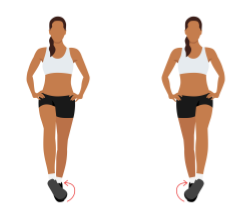
If You Do Get Injured…
Even with the best preparation, injuries happen. Amaze is here to help you decide if you need urgent care. But many of the most common pickleball injuries can be managed with the basics of RICE: Rest-Ice-Compression-Elevation.
- Rest.
- Apply ice to minimize the inflammation that will develop in the injured tissue (ligaments, tendons, etc.).
- Apply compression with an elastic bandage.
- Elevate the injury to minimize swelling.
If appropriate, you can take over-the-counter medications to help relieve the pain and swelling. If you are unable to move the joint and worry there could be a fracture and/or dislocation, seek professional medical attention for an X-ray and further evaluation. You can start by calling Amaze.